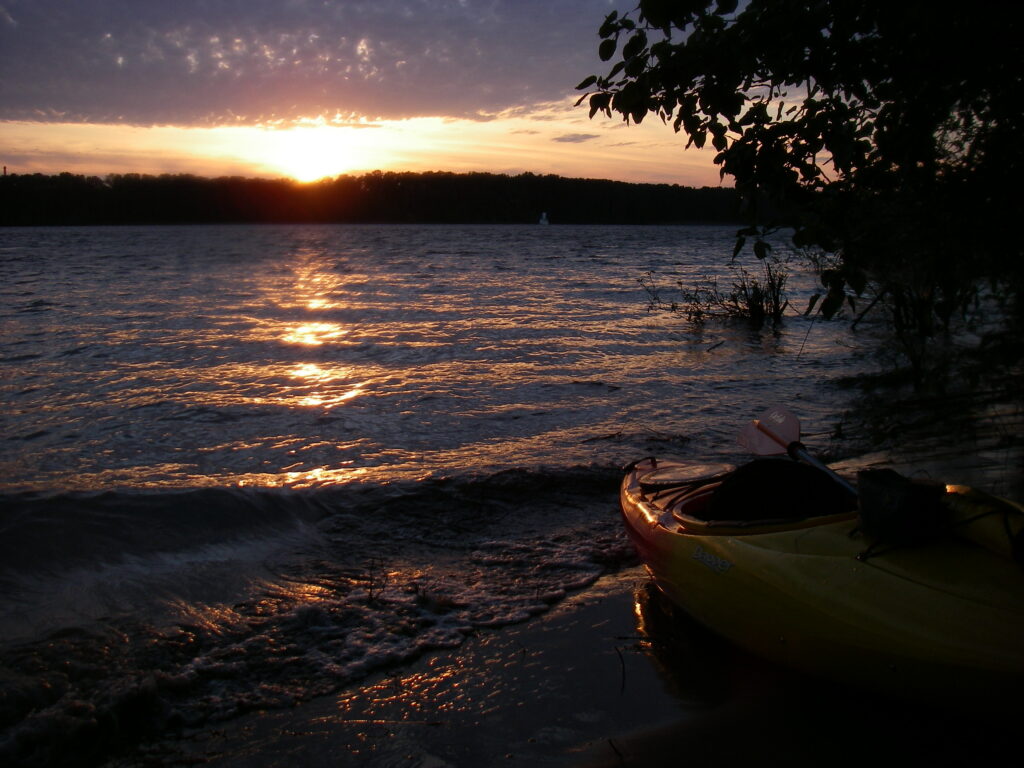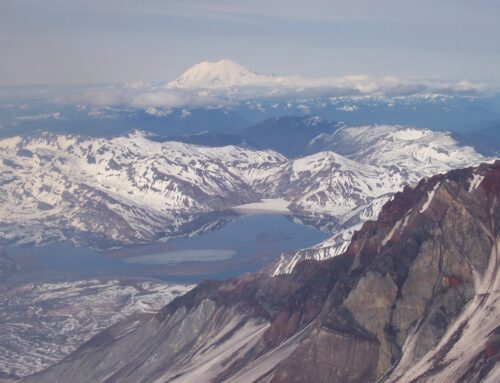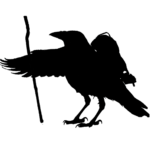The clear flow rippled past the rock bottom. A shimmering, translucent Lewis was fast and cold at Island Ramp, despite its 83 mile journey from icy headwaters high on the Adams Glacier. The long, wet winter’s heavy snowpack was still sloughing into spring melt as I stood judging the river’s speed, and the time my final journey on the Lewis would take. It was the last few days of May, the sun had finally broke out of months of grey, and I was eager to immerse into this scene.

Island Ramp is the last official boat launch on the Lewis River. The ramp lies twelve miles upstream from the mouth of the Lewis. My plan was simple; float the Lewis to its mouth, push upstream on the Columbia to Lake River, and paddle the short, two mile stretch to my home in Ridgefield.
The scene on the ramp was a stark contrast with the one I found on another late spring day five years before. On that day I stood at the river’s headwaters, where the cool, crisp, humid smell of ice, and the silence of the snow-bound, isolated alpine setting smothered any competing sensory distractions. Being still, taking the time to absorb the details of the elevated vista, the ease of tracing the path of the Lewis from that high place, was an intuitive response then.
Standing next to my kayak, my mind bounced from the buzz of cars, to the smell trees, sun, and hot, dusty gravel, and to the image of the main current and bank-side eddies. I was confident the tune-in would happen once the float began. However, it would take a bit of constant, conscious effort in this river scene intertwined with civilization. The changing of frequencies, the immersion, is always a smooth shift when nature dominates the senses. The immersion today would take some effort on the final float, and I was eager to start.
I let the kayak spin in the gentle, bank-side eddies along the north channel as I contemplated the island. The late afternoon sun was starting to sink through the trees above Finn Hall and Ross Creek. Two strokes pushed the yak into the current, where we were quickly drawn through a sweeping left turn. A patch of tree-filtered sun shown an emerald spotlight on the water, which I spent five unsuccessful minutes attempting to capture photos from the low seat of the kayak. The dark green, silty water slowly boiled out of the turn as I moved back and forth along the opposite shore looking for well-framed photos of the wildflowers on top of the bank. The dawdling came to an end as I began a steady paddle, thinking about the setting sun and the wide, flat water in the stretches downstream of Woodland.
The next four miles were a series of familiar scenes. The ripples and light rapids that I had floated with my father as a young boy, now lay invisible under the high water just a little upstream from the “hole”. Passing along the flat stretch paralleling Haye’s Route, I noticed the alder covered, north shore with its surreptitious muddy take out I had used in years past with friends. Eventually the final, sharp corner that marked Larry’s long-closed sporting goods store. Just past the bend is the final rapid, the rock islands and bench used by legions of local fishermen over the years. The high flow easily covers the rocks, and I find myself eager to pass Woodland as the odor of fast-food grease briefly blankets the water, tugging at my mind to re-frame out of immersion.
I spin the kayak around as I slip under the old highway bridge. The sights, smells, and sounds of Woodland fall away into the subtle rumble of the freeway to the west. I look at the last westward hummock of the Cascade Mountains framed by the bridge, and then resume a strong paddle downstream, beginning a race with the sun. I sweat, both from the sun and from challenging the kayak’s hull speed, as the green trestles of the freeway crossing approach. It feels ironically tranquil beneath the freeway and its rhythmically pulsing roar. I grasp a tree limb on the east bank, pausing to watch distant birds trace flight-paths framed by steel girders. Releasing the branch, I float through the shadows and resume a steady paddle beside the dike. There are still five miles of river before the mouth, the sun will set in an hour, and I fall into the effort of paddling.



A quite twenty minutes ticks by as I plod by the tulip fields hidden by the dike. The Forks approach. Steep dirt cliffs appear on the southern shore as I swing around the bend where east meets north. A unified Lewis dazzles in evening sunlight to the west. The water from Cougar Rock and the water from Mt. Adams flow together, building a light chop with the usual evening breeze. I maintain my effort against the wind as the Lewis follows the familiar Dike Road and approaches the old, rusting turnstile railroad bridge. My thoughts turn cyclical, ceaselessly skipping between the scene before me, planning a camera shot of the setting sun, and a constant flow of memories from the chapter of my life in Woodland.
A train’s whistle blasts as it rumbles across the ancient bridge. That blasting shriek has been a stabilizing part of my world for years; a repetitive intrusion in Fairbanks, in Woodland, and now again in Ridgefield. It is so predictable and steady that with time it has faded into the assumed natural pattern of my space. The whistle serves as a constant in my schema, like the seasonal progression, the regular wind; these strange attractors that help point a pattern in life’s randomness . These natural pulse beats form a type of Cartesian foundation, an external, independent variable to guide my psyche’s constant abductive desire to find patterns and predictability. My mind settles through the memories and past problems, content again to watch the sun set as a barge crosses into view beyond Austin’s Point.
The mouth is a chop of competing fluids. The Lewis is merely a perpendicular thrust of cold, emerald water into the warm, brown Columbia. The confluence between the two builds into a turbulent surface chaos. I spin the yak around and around, feeling a petty thrill at my small achievement of reaching the mouth and finishing this survey. The spin creates a panorama of views, Columbia City sitting picturesquely across the expansive river, the orange of an approaching sunset dances on the choppy confluence, and Davis Peak and Mt. St. Helens guarding the far distance above the last stretch of the Lewis. All alternate together
Wind waves build, surging the kayak upstream. I paddle hard, my novice ability racing against the building surf to reach the sanctuary of Lake River. I pause again and again, letting my discipline succumb to my desire to watch the setting sun. An hour passes, and the wind still blows, and the kayak sits idle, and I swing lightly in my hammock, sensing the pulse beats, feeling at rest. The river continues its flow, as the high tide finishes its creep up the tiny beach.








